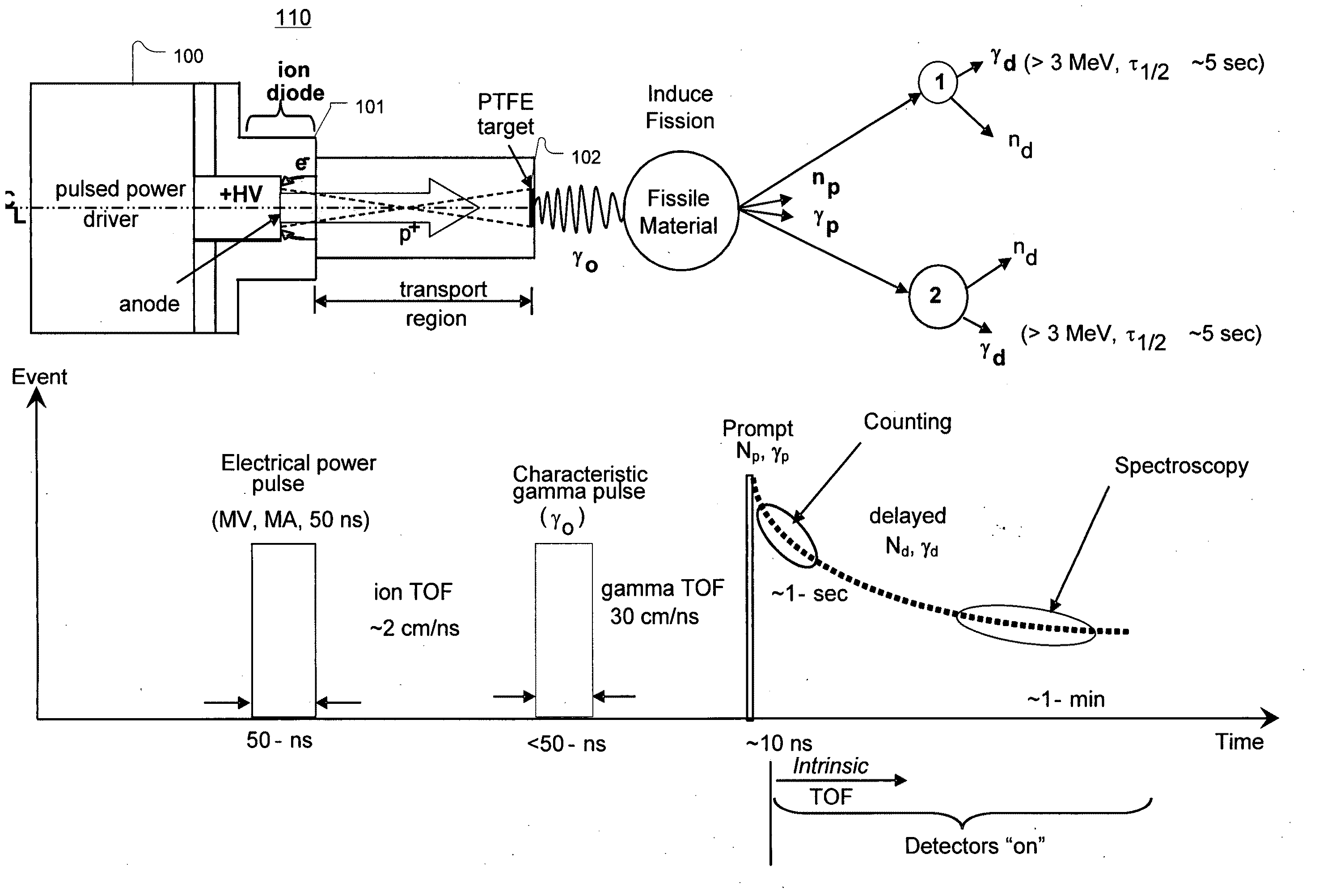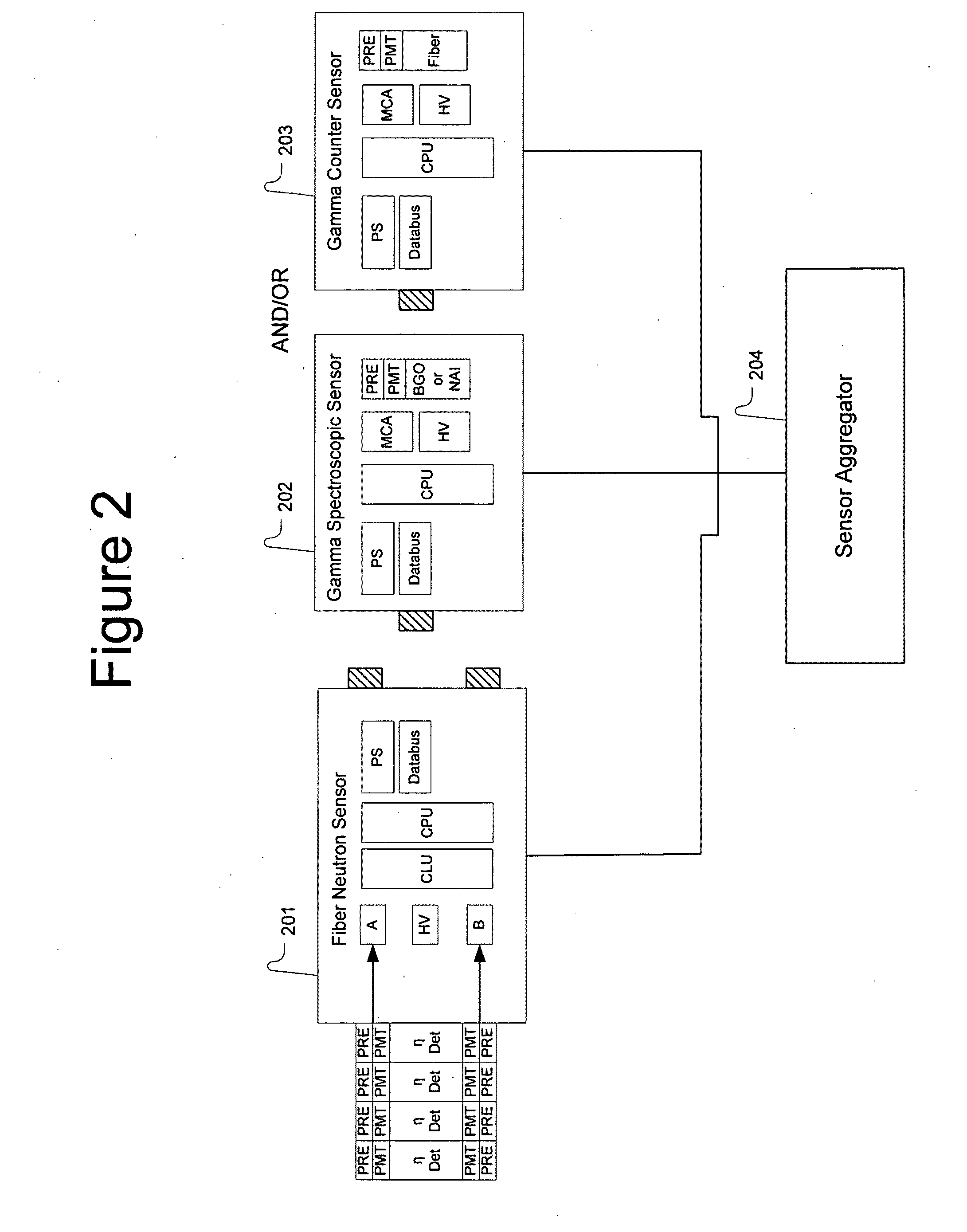Rediation detector system for locating and identifying special nuclear material in moving vehicles
- Summary
- Abstract
- Description
- Claims
- Application Information
AI Technical Summary
Benefits of technology
Problems solved by technology
Method used
Image
Examples
Embodiment Construction
[0026]Now referring to FIG. 1, FIG. 1 shows a diagrammatic view of one embodiment of pulsed monenergetic gamma source according to the present invention, including a time line for the varying energies and their time of flight. As shown, a pulsed source 110 produces monoenergetic gamma rays, γ0. A similar pulsed source of gamma-rays was developed by the Navy as a potential probe to identify special nuclear material. Schumer et al., Development of an Intense Pulsed Characteristic γ-Ray Source for Active Interrogation of SNM, 2007 IEEE Nuclear Science Symp. Conf. Rec., March, 2007, 1026-1032. The pulsed source 110 according to the present invention uses a pinch-reflex ion diode 101 operated on a Gamble II pulsed power driver 100. The pulsed power driver 100 and ion diode 101 produce proton beams, p+, having a nominal 270-kA peak current and 2.0-MV peak voltage. The pulsed electrical power duration and energy is depicted in the time line. These beams bombard a polytetrafluoroethylene (P...
PUM
 Login to View More
Login to View More Abstract
Description
Claims
Application Information
 Login to View More
Login to View More - R&D
- Intellectual Property
- Life Sciences
- Materials
- Tech Scout
- Unparalleled Data Quality
- Higher Quality Content
- 60% Fewer Hallucinations
Browse by: Latest US Patents, China's latest patents, Technical Efficacy Thesaurus, Application Domain, Technology Topic, Popular Technical Reports.
© 2025 PatSnap. All rights reserved.Legal|Privacy policy|Modern Slavery Act Transparency Statement|Sitemap|About US| Contact US: help@patsnap.com



